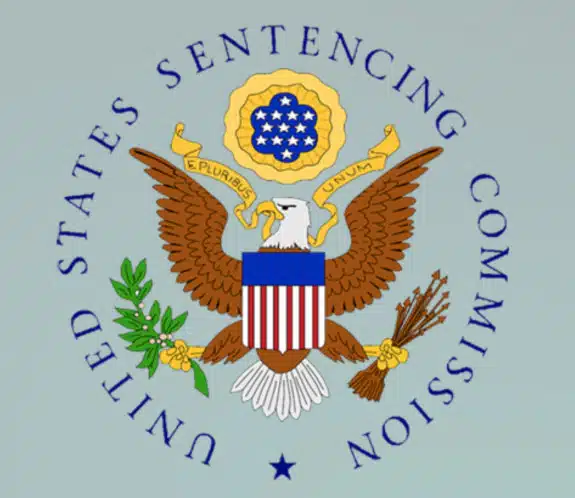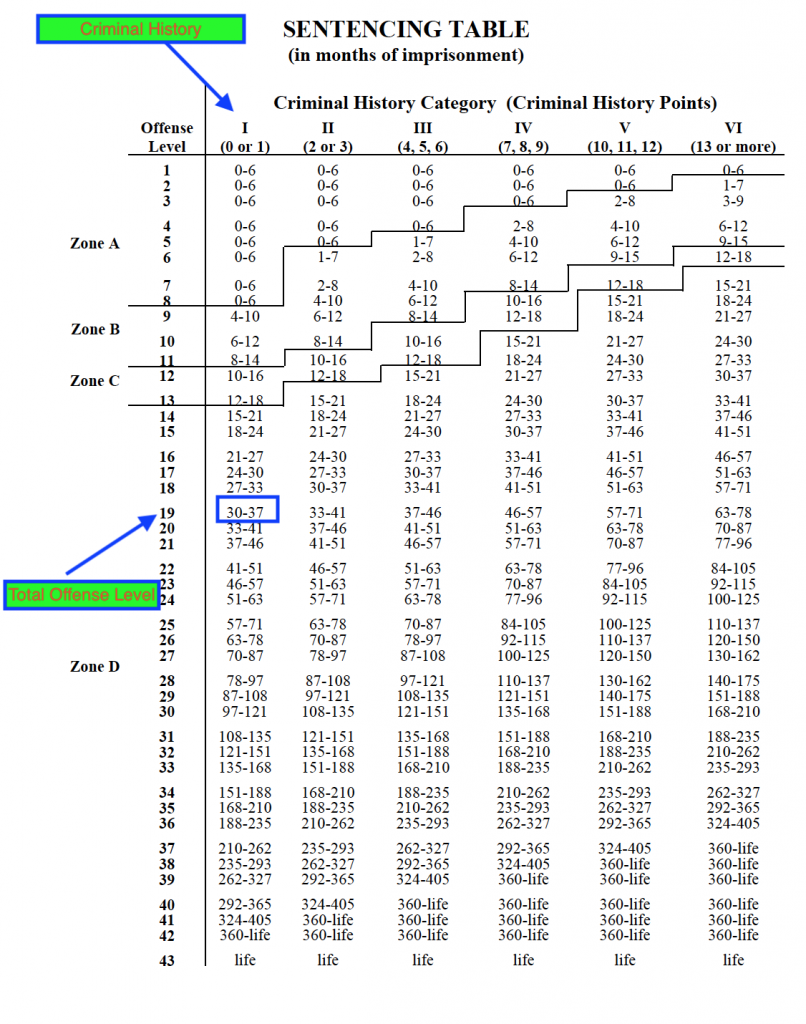Understanding The Federal Sentencing Guidelines
Posted by David C. Hardy on September 9, 2018

The safety valve can protect low level members of a federal drug conspiracy from long minimum mandatory sentences.
What Are The United States Federal Sentencing Guidelines?
In 1984 a law called the Sentencing Reform Act established the United States Federal Sentencing Guidelines.
Before 1984, federal judges in the United States enjoyed a lot of discretion when sentencing defendants. However, this discretion sometimes resulted in disparate sentences around the country for the same criminal conduct.
For example, a defendant convicted of distributing a certain amount of cocaine in one part of the country might receive a much harsher sentence than a defendant convicted of distributing the same amount of cocaine in another part of the country. The sentencing guidelines are designed to reduce such disparate sentences among similarly situated defendants.
Why Are The United States Federal Sentencing Guidelines So Important?
If you or a loved one is facing federal criminal charges, one of the first things you will need to do is gain an understanding of the United States Federal Sentencing Guidelines.
From the very beginning of a federal case it is essential for a defendant to understand the sentencing guidelines, because the guidelines often drive important decisions like whether or not to plead guilty, whether or not to cooperate with the government, and whether or not to go to trial.
Are the United States Federal Sentencing Guidelines Mandatory?
From 1984 until 2005, the federal sentencing guidelines were mandatory, so judges were obligated to impose whatever sentences the guidelines prescribed.

In 2005, in the case of United States v. Booker, the United States Supreme Court made the federal sentencing guidelines advisory rather than mandatory.
However, in 2005, in a case called United States v. Booker, the United States Supreme Court changed the federal sentencing scheme, by making the United States Federal Sentencing Guidelines advisory rather than mandatory. So now, while federal judges are required to calculate a defendant’s sentencing guideline before imposing a sentence, federal judges are not bound to follow the federal sentencing guideline recommended sentence. Rather, the federal judges must now treat the sentencing guidelines as just one of the many sentencing factors to be considered when sentencing a defendant.
Some of the other factors a judge will consider when sentencing a defendant are the nature and circumstances of the offense, the history and characteristics of the defendant, the purposes of sentencing, the kinds of sentences available, the need to avoid unwarranted sentencing disparities, and the need to provide restitution.
What Types Of Punishments Do The United States Federal Sentencing Guidelines Include?
The federal sentencing guidelines instruct the sentencing judge to impose one or more of four types of punishment in every case: probation, fine, imprisonment, and supervised release.
How Do The United States Federal Sentencing Guidelines Generally Work?
The federal sentencing guidelines establish an offense level (which is intended to account for the seriousness of the offense) and a criminal history category (which is intended to account for the seriousness of the defendant’s criminal history).
The basic idea is that the higher the offense level, and the higher the criminal history category, the longer the sentencing guidelines recommended sentence.
How Is The Sentencing Guideline Offense Level Determined?

The Federal Sentencing Guidelines are set out in a manual which is written by the United States Sentencing Commission.
Base Offense Level:
Each type of crime is assigned a base offense level, which is the starting point for determining the seriousness of a particular offense. The idea is that more serious crimes have more serious offense levels. For example, distribution of 150 grams of cocaine has a higher offense level than distribution of 75 grams of cocaine.
Specific Offense Characteristics:
In addition to base offense levels, each offense type normally has a number of specific offense characteristics. These are factors that can increase or decrease the base offense level. For example, in a drug case, if a defendant possessed a dangerous weapon (including a firearm) during the offense, the offense level is increased by 2 levels.
Adjustments:
Similar to specific offense characteristics, adjustment increase or decrease the offense level.
Categories of adjustments include: victim-related adjustments, the offender’s role in the offense, and obstruction of justice.
For example, in a fraud case, if the offense involved a misrepresentation that the defendant was acting on behalf of a charitable, educational, religious, or political organization, or a government agency, the offense level is increased by two levels.
Acceptance of Responsibility:
If the judge finds that a defendant has accepted responsibility for the offense, the offense level may be reduced by 2 or 3 levels, depending on the facts of the particular case.
How is a Defendant’s Criminal History Category Determined:
The guidelines assign each defendant a criminal history category based upon the defendant’s prior criminal history.
In general, the point system works as follows. For each prior sentence in which the defendant was incarcerated for more than 13 months, the defendant gets 3 criminal history points. For each prior sentence in which a defendant was incarcerated at least 60 days, the defendant gets 2 criminal history points. For any other prior sentences not counted by the first two rules, the defendant gets one criminal history point.
Criminal history Category I is the least serious category, and criminal history Category VI is the most serious category. The higher the criminal history category is, the longer the recommended guideline sentence will be.
An Example Of A United States Federal Sentencing Guideline in a Healthcare Fraud Case

With an offense level 19, and a criminal history category I, the advisory federal guidelines sentence would be 30 to 37 months of incarceration.
Federal Statute Charged: Health Care Fraud (18 U.S.C. §§1347 and 2) Guideline Section: USSG §2B1.1 Base Offense Level: The Base Offense Level is set at 6 Specific Offense Characteristic #1: Assuming the amount of money lost during the health care fraud was $750,000, the federal sentencing guidelines require a 14 level increase in the offense level. Specific Offense Characteristic #2: Healthcare fraud cases frequently involve a defendant using sophisticated means to carry out the fraud. In such cases, the federal sentencing guidelines call for a 2 level increase in offense level. Acceptance of Responsibility: If a defendant clearly demonstrates acceptance of responsibility for the offense, and the Defendant timely notifies the Government of his intention to plead guilty before trial, the federal sentencing guidelines call for a 3 level decrease in offense level. Criminal History Category: Let’s assume for the purposes of our example that the Defendant has no criminal history. Therefore, the defendant’s criminal history would be criminal history category I. Total Offense Level: Based upon a total offense level of 19, and a criminal history category of 1, the guideline imprisonment range would be 30 to 37 months of incarceration.
Remember that the federal sentencing guidelines are now just one piece of the puzzle. A Federal District Court Judge will take other factors into account when imposing sentence upon a defendant. For more information on how the federal sentencing process works, click here.
Where Can I Read The United States Federal Sentencing Guidelines?
If you would like to read the federal sentencing guidlines yourself, you can go to the United States Sentencing Commission’s webiste by clicking here.
Contact The Hardy Law Firm, P.A.
If you or a loved one has been accused of a federal crime, contact Board Certified Criminal Trial Attorney David C. Hardy.

Attorney Hardy began his work in the federal courts when he served as an intern with the United States Department of Justice in 1999.
Attorney Hardy began his work in the federal courts when he served as an intern with the United States Department of Justice in 1999.
In the federal courts, Attorney Hardy has handled a wide variety of cases including international extradition, drug trafficking, bank fraud, healthcare fraud, immigration offenses, identity theft, the misbranding of drugs, and firearms offenses.
Attorney Hardy has represented clients in Federal Trial and Appellate Courts in Florida, Texas, and Georgia. For more information on Attorney Hardy’s experience, click here.
Posted in Federal Criminal Defense

David C. Hardy
David C. Hardy is a criminal defense attorney with offices in Tampa, Florida. He is a former prosecutor that is Board Certified by the Florida Bar and The National Board of Trial advocacy as an expert in criminal trial law. He practices in the areas of federal criminal defense, Florida criminal defense, and Florida DUI defense.
